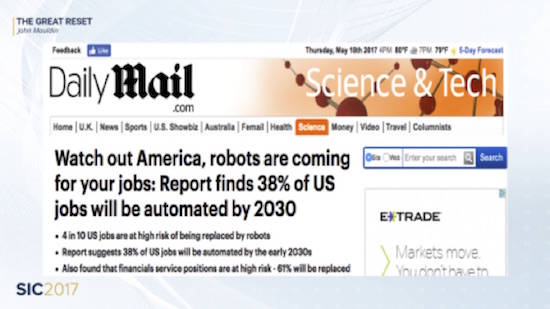The present standard of retiring somewhere between ages 60 and 70 is not going to be sustainable when half the population lives to 80 or 90 – which is already realistic today – let alone 100 or more. It’s just not possible. If you’re like me, you don’t intend to retire at 70 or maybe not at all, but it’s nice to know we have the option. Future generations won’t.
According to WEF, the global dependency ratio under current policies will plummet from 8:1 today to 4:1 by 2050. That means just four active workers for each retiree. And that’s including developing and frontier markets. Developed markets will see a global dependency ratio of about 2:1. I see no way that can work. WEF doesn’t either. Here is their advice to political leaders:
Given the rise in longevity and the declining dependency ratio, policy-makers must immediately consider how to foster a functioning labour market for older workers to extend working careers as much as possible.
There you have it, straight from Davos. We must “extend working careers as much as possible.” Your dream of hanging up the work clothes at 65 and going on extended vacation will remain a dream until some later date. Early retirement will survive only for the kind of people who go to Davos.
Again, for me this is fine. I’m 67 and I love my work. I plan to keep at it for many years to come. But I understand many people don’t have that option. They have health problems, or their professions are being automated, or they spent their career doing physical work that is no longer possible. The medical advances I foresee will help, but they’ll take time to become affordable to everyone. Some people are going to fall through the cracks.
Moreover, simply saving more money probably isn’t an answer, either. Interest rates are a function of supply and demand. You can’t invest your savings in a high-yield bond unless someone out there can borrow at that same yield. When so many of us want to lend and no new borrowers appear, supply and demand will keep yields low. We already see this in today’s near-ZIRP conditions, and they may not improve much.
Part of the justification for ZIRP was that it would force capital into risk assets, thereby stimulating the economy. It now appears that the only thing stimulated was asset prices, and by and by the risk is going to catch up with those taking unwise amounts of it. That unhappy outcome will likely widen the retirement shortfall even further.
And so the expectation of longevity is going to motivate people to want to save more money, except they’ll have to have jobs that pay enough to enable them to save money to flesh out the retirement plan. This headline appeared a few weeks ago:

Oops. The Council of Economic Advisers now estimates that artificial intelligence will replace 83% of low-wage jobs. I’m not certain how they came up with that number – it seems high – but whatever is the figure turns out to be, it’s alarming. And the jobs we are creating today are not the high-paying manufacturing jobs that everybody wants to “bring back.” They’re not there to be brought back. There is actually a quite large “re-shoring” movement going on, but the companies that are coming back are doing so with automated technology and far fewer workers than before. The advantage of using inexpensive offshore labor has fallen before the advantage of being close to your markets and “employing” robots and artificial intelligence.
The McKinsey Global Institute published a report last December that said: “On a global scale, we calculated the adoption of currently demonstrated automation technologies could affect 50% of the world economy’s 1.2 billion employees and $14.6 trillion in wages.” That is an astonishing statistic.
By the way, one of the subheads in that screenshot above points out that 61% of financial services positions are at high risk of being replaced. If you are in the financial services industry, maybe you should be thinking about how you can keep from being automated out of a job.








